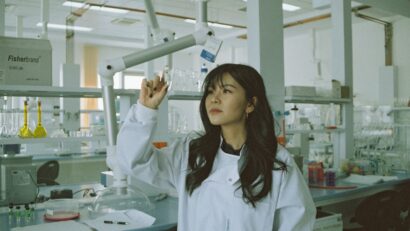
Breakthrough: New gel shown to be effective for brain tumour treatment
A new “miracle” gel shows great promise for brain tumour treatment during lab tests at Johns Hopkins University. The gel is used to treat one of the most aggressive forms of brain tumour, glioblastoma, leaving patients with a diagnosed life expectancy of 12 – 18 months. The new treatment is used post-surgery to fill the spaces left by the removed tumour, hindering it from regrowing!
Professor Cui, an expert on chemical and biomolecular engineering, and his team say that the gel could even be used to treat areas of the brain that surgery might not be able to reach. Other than that, tests on infected mice have shown that the gel removed 100 percent of the aggressive tumour, freeing them from certain death. Furthermore, the gel seemed to create an immune reaction that allowed surviving mice, who were reinfected with glioblastoma, to fend off the tumour on their own using only their immune system. It also showed signs of improving immune memory, leading to a generally strengthened immune system post treatment.
Despite the breakthrough, the medical procedure is still risky since brain surgery is still required for the gel to work effectively, having to be applied directly to the brain. Using the gel without surgery first led to a survival rate of around 50 percent.
[embedded content]
For those interested in the science behind the miracle: the gel uses a combination of nano-sized filaments, extracted from the approved drug paclitaxel which then transports the antibody called aCD47. The mixture then expands upon the crevice that the tumour left, leaving the aggressive cancer with no room to regrow, thereby killing it off.
Brain Tumour Treatment: Glioblastoma – aggressive and everywhere
There are a few reasons why Glioblastoma is so dangerous. The tumour is fast-growing and infects surrounding tissue, which can make surgical removal even harder. Another reason is the brain’s own defence mechanism, known as the blood brain barrier or BBB for short. This barrier normally hinders harmful substances from entering the brain, but also does the same for cancer treating drugs, leading to treatments being less effective.
Glioblastoma’s location in the human brain also doesn’t help with its treatment as it is usually located in the cerebral hemispheres of the brain, which are responsible for critical functions such as movement, sensation, and cognition. This makes surgical intervention more risky, as injuring healthy brain tissue can lead to serious neurological problems.
Science deniers and conspiracy believers are trying to push an anti-science agenda
In the past century, medicine has come a long way. From the times of experimental treatments using drugs like heroin and cocaine to the first effective polio vaccine developed in 1955 by Dr. Jonas Salk, ending the terror of infantile paralysis.
The medical developments of the past few years, however, have been even more marvellous. Science managed to make breakthrough after breakthrough. From healing patients with HIV, a sickness that used to be untreatable and therefore a death sentence, to stopping a global pandemic within two years of the outbreak.
Modern science is leading humanity to longer and healthier lives. But the security and development that scientific research has brought to fruition has come under attack as of recent. Science deniers and conspiracy believers are trying to push an anti-science agenda, smearing scientific fact as wrong or “fake news”, attesting that scientists are either bought by a mysterious elite or some other delusion, just because science does not back their opinion on certain topics. In today’s age of information, having sources and research is key to being informed. Therefore, it is necessary to honour and protect proper scientific research from delusional attacks such as those we saw during the covid pandemic. Because without modern science, life as we know it would be a lot shorter, and a lot less enjoyable, as the case of Glioblastoma makes evermore clear. Läs mer…